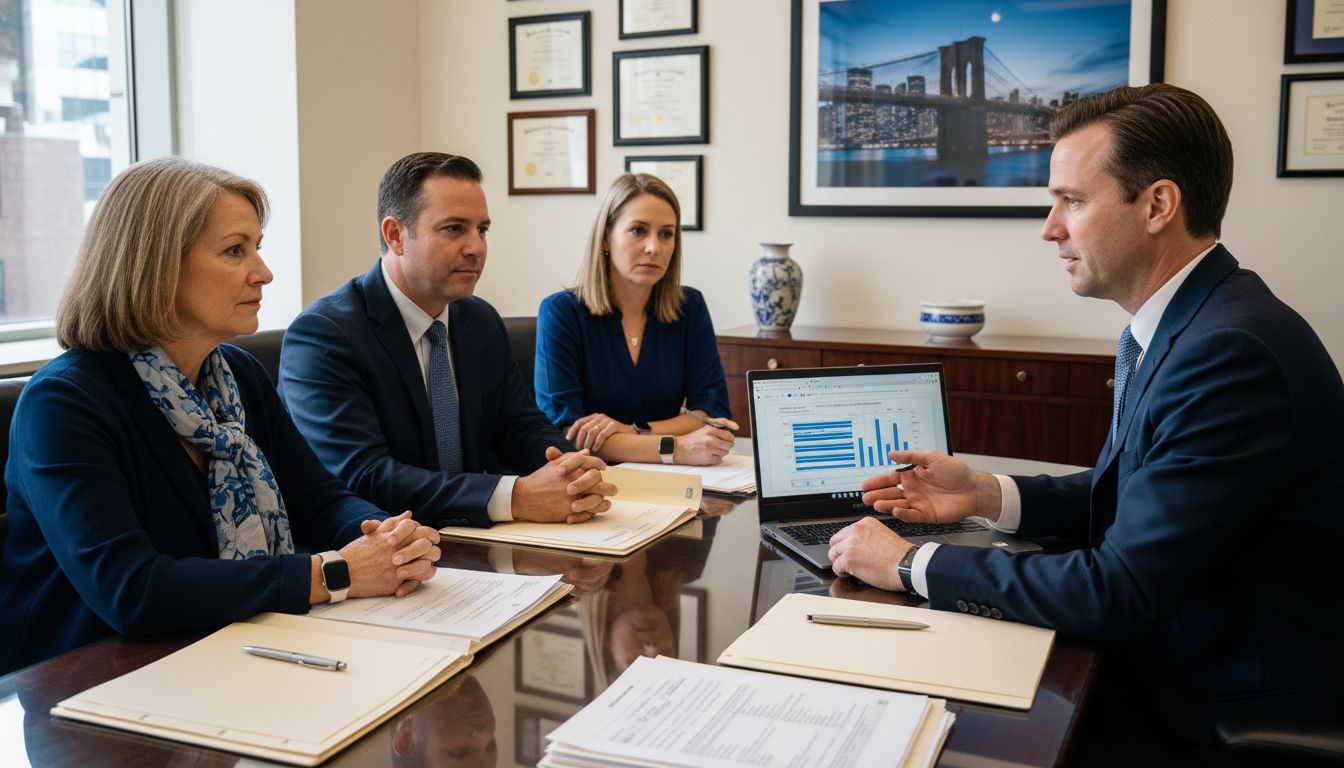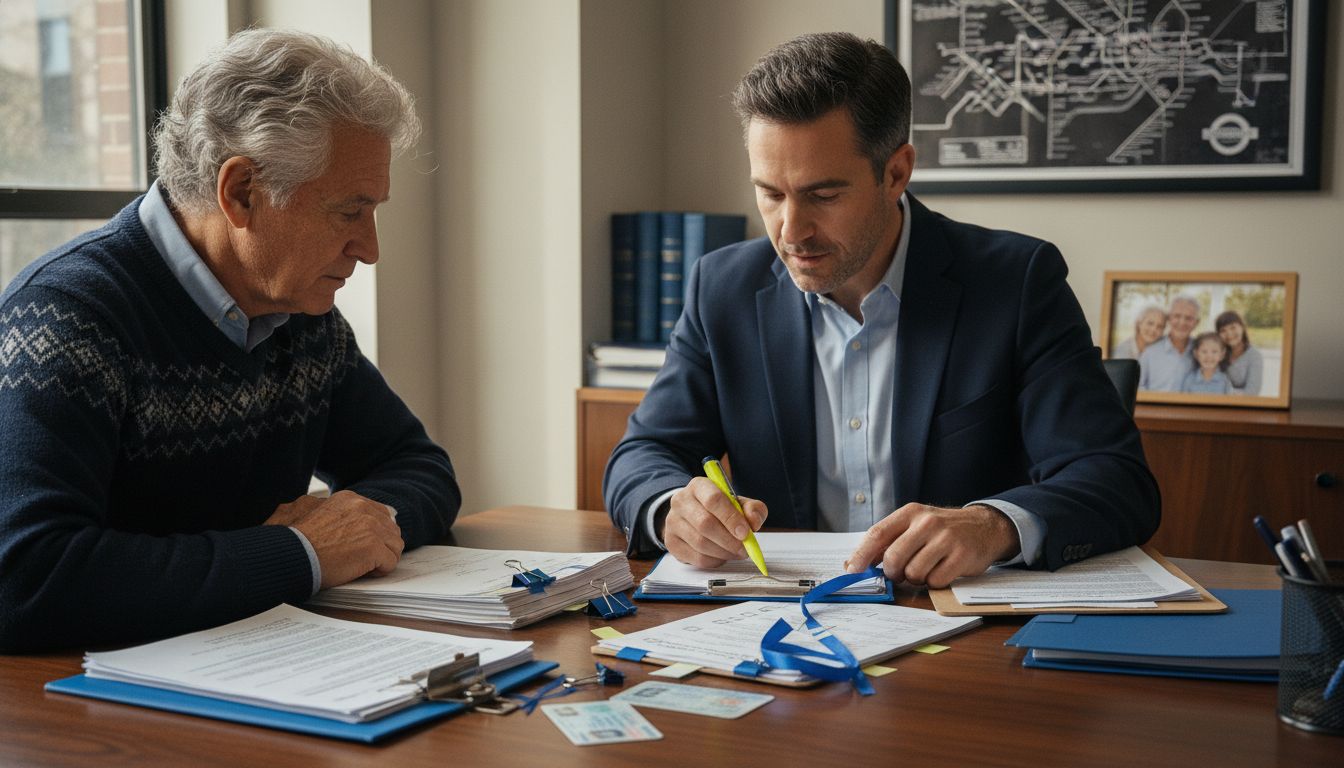
Nearly one in four adults in New York rely on Medicaid for essential healthcare coverage. Yet, strict eligibility rules and asset limits can make qualifying feel overwhelming. Understanding these detailed requirements empowers you to protect your finances and access the support you need. With the right approach, you can navigate each step confidently and avoid costly mistakes that cause delays or denials.
Quick Summary
| Key Point | Explanation |
| 1. Determine Medicaid eligibility criteria | Assess your income and assets against specified limits to establish your potential eligibility for Medicaid support. |
| 2. Collect required financial documentation | Compile essential documents like bank statements and income records to create a comprehensive application package. |
| 3. Implement strategic asset protection | Use methods such as irrevocable trusts and spending down assets to protect your financial resources while qualifying for Medicaid. |
| 4. Submit a complete Medicaid application | Ensure all necessary documents are accurately submitted for your Medicaid application to avoid delays or disqualifications. |
| 5. Respond promptly to follow-up requests | Manage any additional documentation requests quickly to prevent interruptions in your Medicaid coverage after approval. |
Step 1: Evaluate Medicaid eligibility and asset limits
In this critical first step, you will systematically review your financial situation to determine whether you qualify for Medicaid support based on precise income and asset guidelines. Our goal is to help you understand the specific requirements that will determine your potential eligibility.
According to the nysenate.gov guidelines for New York, as of September 2023, Medicaid eligibility for individuals aged 65 and over depends on two primary factors: income limits and asset thresholds. For singles, the annual income limit is $20,121, while couples can have up to $27,214 in annual income. Importantly, these figures are subject to yearly adjustments, so staying current is crucial.
To begin evaluating your eligibility, gather comprehensive financial documentation including:
-
Bank statements from the past 3 months
-
Social Security income records
-
Pension or retirement account statements
-
Documentation of any additional income sources
As outlined by nyc.gov, New York specifically sets monthly income limits at $1,677 for singles and $2,268 for couples. Asset limits are equally precise: $30,180 for singles and $40,820 for couples, with an additional $1,500 allowed for burial funds per person. These specific thresholds mean meticulous financial review is essential.
Warning: Do not attempt to artificially reduce your assets by transferring funds or making large gifts without professional guidance, as this could trigger Medicaid penalties. Consult an elder law attorney who can help you navigate these complex regulations strategically and legally.
In the next step, you will learn how to protect and strategically position your assets to maximize your potential Medicaid eligibility while preserving your financial security.
Step 2: Gather financial and medical documentation
In this critical step, you will compile a comprehensive set of documents that will serve as the foundation for your Medicaid application. Your goal is to assemble a complete financial and medical record that accurately represents your current situation.
According to nyc.gov, Medicaid applicants must provide extensive documentation covering all income sources and assets. This means gathering proof of income including:
-
Wages and employment records
-
Social Security benefit statements
-
Pension payment documentation
-
Retirement account statements
-
Investment income records
-
Bank statements for all accounts
On the asset side, you will need to document cash reserves, bank accounts, retirement accounts, stocks, and other financial instruments. Remember that certain assets like your primary home and personal belongings are typically not counted toward Medicaid asset limits, which can work in your favor.
opwdd.ny.gov highlights an important technical detail: New York State uses an electronic asset verification system (AVS) to confirm resource information. When you submit your application, you or your representative will need to authorize the use of this system by signing specific application or recertification forms.
Warning: Be thorough and transparent. Incomplete or inaccurate documentation can delay or potentially disqualify your Medicaid application. Consider working with an elder law attorney who can help you organize these documents precisely.

In the next step, you will learn how to strategically review and potentially restructure your assets to improve your Medicaid eligibility.
Step 3: Implement asset protection strategies
In this critical step, you will learn strategic methods to protect your assets while maintaining Medicaid eligibility. Your primary goal is to preserve your financial resources while positioning yourself favorably for Medicaid support.
According to nyc.gov, certain assets are automatically exempt from Medicaid asset calculations. This means you can strategically protect key resources such as your primary residence, one automobile, and personal belongings without impacting your eligibility. These exemptions provide a valuable foundation for your asset protection strategy.
One powerful approach involves the Medicaid Spend Down program recommended by elder law professionals. As nysed.gov explains, individuals with income exceeding Medicaid limits can qualify by incurring medical expenses that reduce their countable income to meet eligibility thresholds.
Key strategies for asset protection include:
-
Creating irrevocable trusts
-
Transferring assets to immediate family members
-
Converting countable assets into exempt resources
-
Purchasing qualifying annuities
-
Investing in funeral and burial arrangements
Warning: Asset transfers must be carefully timed and executed. Improper transfers can trigger Medicaid penalties and potentially disqualify you from benefits. Always consult an experienced elder law attorney to navigate these complex regulations.
In the next step, you will learn how to work with legal professionals to finalize your Medicaid planning strategy and ensure maximum asset preservation.
Step 4: Complete and submit the Medicaid application
In this crucial step, you will navigate the final stage of your Medicaid application process by carefully completing and submitting the required documentation. Your goal is to ensure a smooth and accurate application that maximizes your chances of approval.
Medicaid Citizenship Requirements play a critical role in determining eligibility. According to healthweb-back.health.ny.gov, New York residents have multiple options for obtaining and submitting their Medicaid application. You can contact your local Medicaid office to receive an application, which can be submitted either by mail or in person. For additional support, the Medicaid Helpline at 800-541-2831 offers comprehensive assistance throughout the application process.
Prepare your application package by carefully assembling these essential documents:
-
Completed Medicaid application form
-
Proof of identity
-
Social Security documentation
-
Income verification documents
-
Asset statements
-
Medical records
-
Proof of residence
-
Citizenship or immigration status documents
As aging.ny.gov suggests, Medicare beneficiaries might also qualify for additional financial assistance programs. This means you should be prepared to explore supplemental support options during your application process.
Warning: Review your application meticulously before submission. Even minor errors or omissions can delay processing or potentially result in denial. Consider having an elder law attorney review your documentation to ensure completeness and accuracy.
In the final step, you will learn how to follow up on your application and understand the potential next steps in your Medicaid journey.
Step 5: Verify approval and address follow-up requests
In this critical final stage, you will navigate the confirmation process for your Medicaid application and effectively manage any additional documentation requests. Your goal is to secure and maintain your Medicaid coverage by responding promptly and accurately to all communication.
According to osc.ny.gov, New York State has significantly changed its Medicaid enrollment process since March 2023. With the end of continuous coverage requirements, the state is now actively redetermining eligibility for all current and new enrollees. This means you must be prepared to quickly respond to any follow-up inquiries to prevent interruption of your benefits.
Key steps for managing follow-up requests include:
-
Carefully read all correspondence from Medicaid
-
Respond within the specified timeframe
-
Gather requested documentation immediately
-
Make copies of all submitted materials
-
Keep detailed records of your communication
-
Contact your local Medicaid office if you need clarification
opwdd.ny.gov warns that failure to respond to Medicaid inquiries regarding resource verification may result in application denial or case closure. Prompt and thorough communication is absolutely essential to maintaining your eligibility.
Warning: Do not ignore or delay responding to Medicaid requests. If you are uncertain about how to proceed, consult an elder law attorney who can guide you through the verification process and help you prepare comprehensive responses.
Congratulations on completing your Medicaid planning journey. Your proactive approach will help ensure access to critical healthcare support when you need it most.
Take Charge of Your Medicaid Planning Today
Navigating the complex process of Medicaid eligibility and asset protection can feel overwhelming. This article highlights the critical challenges Brooklyn families face, such as meeting strict income and asset limits, organizing detailed financial and medical documentation, and strategically protecting assets to secure essential long-term care. Understanding terms like Medicaid Spend Down and the importance of timely application follow-up is essential to avoid delays or denial of benefits.
Do not let confusion or fear stand in your way. With the right guidance, you can protect your family’s financial future and access the care you deserve. At Alatsas Law Firm, we specialize in elder law and Medicaid planning tailored to Brooklyn families facing these exact challenges. Our founder, Ted Alatsas, combines deep community roots with personalized legal strategies that help clients:
-
Understand eligibility requirements clearly
-
Organize and submit thorough applications
-
Implement smart asset protection techniques
![]()
Begin your proactive Medicaid planning now before unexpected health needs arise. Browse our website to access free guides and schedule a consultation. Secure the peace of mind you and your family need today.
Frequently Asked Questions
How do I evaluate Medicaid eligibility for my family?
To evaluate Medicaid eligibility, gather financial documentation such as bank statements, Social Security income records, and pension statements. Review the specific income and asset limits outlined for your family structure and ensure your resources fit within these guidelines.
What documents do I need to gather for the Medicaid application?
You need to collect various documents like proof of identity, income verification, asset statements, and medical records. Organize these documents carefully to ensure a complete application package, which can significantly enhance your chances of approval.
How can I protect my family’s assets while applying for Medicaid?
To protect your assets, consider strategies such as creating irrevocable trusts or converting countable assets into exempt resources. These actions can help you qualify for Medicaid without losing crucial financial resources and should be executed with professional guidance.
What should I do if I receive a follow-up request from Medicaid?
If you receive a follow-up request, respond promptly by gathering the requested documents and submitting them within the specified timeframe. Keeping detailed records of your communication can help prevent any interruptions in your Medicaid benefits.
How can I ensure my Medicaid application is filled out correctly?
To ensure your application is filled out correctly, review it meticulously or consult an experienced elder law attorney. Even minor errors can lead to delays or application denial, so thoroughness in this step is essential.
What are the next steps after submitting my Medicaid application?
After submitting your Medicaid application, monitor for any correspondence or follow-up requests from Medicaid. Respond to these inquiries quickly to maintain your eligibility and continue receiving healthcare support.

